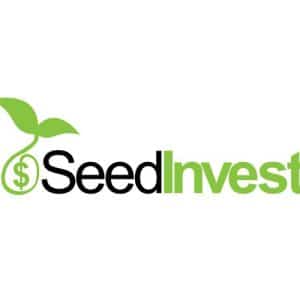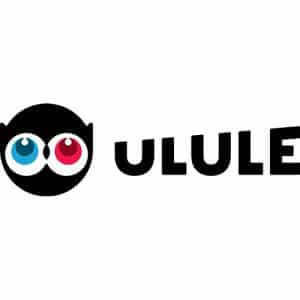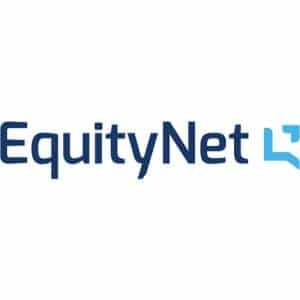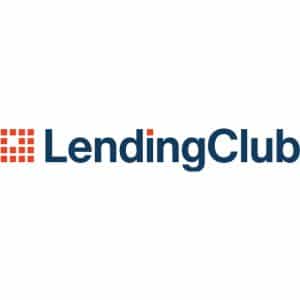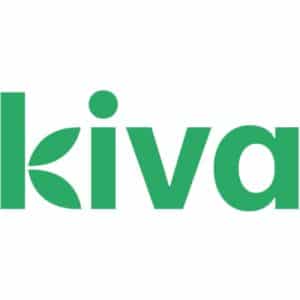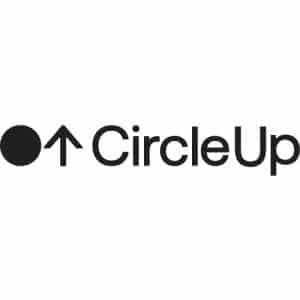Introduction to Crowdfunding for Business Startups
Crowdfunding platforms function as intermediaries that enable entrepreneurs to present their business ideas to a broad audience. This model offers a unique premise: rather than seeking substantial sums from a few, it garners smaller, more manageable contributions from many. This approach not only eases the financial burden on individual backers but also helps in validating the business concept through market interest.
For startups, the crowdfunding process is akin to pre-selling. It demands a strategic campaign that provides a transparent and compelling narrative about the product or service in development. Here, the art of storytelling becomes a critical skill, as it is the story that captivates potential supporters and converts them into actual backers.
To successfully engage the crowd, startups must devise incentives that resonate with their target audience. Rewards-based crowdfunding, for instance, may offer tangible products, early access to services, or exclusive experiences. Conversely, equity-based crowdfunding involves offering a stake in the company, aligning backers with the success of the startup long-term.
It is imperative for entrepreneurs to recognize the importance of setting clear expectations through these exchanges. The commitment doesn’t end when the campaign concludes; it marks the beginning of a relationship where transparency, updates, and delivery on promises become cornerstones. By establishing trust and delivering on its campaign promises, a startup can not only fuel its initial operations but also cultivate a loyal customer base that can propel the business forward.
Understanding crowdfunding in its entirety is vital for any startup aiming to harness its potency. Engaging with the concept requires meticulous preparation, a deep understanding of the target market, the ability to articulate a vision compellingly, and the operational capability to fulfill campaign promises. It is a model that holds promise not just in raising funds but also in building community and establishing a robust foundation for a budding business.
For those interested in exploring crowdfunding platforms and comprehensive guidance, here is a high-ranking resource to consider: visit Kickstarter.
Successful campaign setting on Kickstarter goes beyond merely asking for funds. It begins with a well-researched funding goal that is both attainable and sufficient to complete the project. Startups need to factor in Kickstarter’s fees, taxes, and the cost of reward fulfillment to determine their true funding requirements. Establishing a realistic timeline that includes the development phase up to the delivery of rewards is also paramount. A transparent and achievable roadmap reassures backers of the startup’s commitment and accountability.
An exciting aspect of Kickstarter is the rewards structuring. It offers backers tangible or digital rewards that correspond with their level of pledge. This could range from early bird specials to personalized experiences. Startups must carefully plan these rewards to ensure they align with the interests of their target audience, add value to the pledge, and are cost-effective in terms of production and delivery. Innovative and exclusive rewards can act as a significant draw for potential backers.
Community engagement is a cornerstone of a Kickstarter project’s success. Building a following before launching a campaign is crucial, as it ensures there is a ready pool of initial backers. Leveraging social media platforms, direct outreach, and creating buzz through previews, teasers, and behind-the-scenes content can galvanize an audience. During the campaign, it is essential to update backers regularly to maintain interest and trust.
Kickstarter’s vault is filled with success stories. For example, the Pebble Time smartwatch and the Exploding Kittens card game both shattered records and garnered millions in pledges. These success stories serve as testament to the platform’s potential to deliver projects from concept to market.
Lastly, the importance of a compelling pitch video cannot be overstated. This is usually the first interaction potential backers will have with your project. The video needs to be high-quality, engaging, and should outline the project’s goals, rewards, and the story of the people behind the project. A good pitch video can create a powerful connection with viewers and turn them into backers.
Entrepreneurs eyeing Kickstarter as their crowdfunding choice must remember that while the platform can provide significant funding and support, the success of a campaign ultimately comes down to strategy, execution, and the ability to stir the crowd. To learn more about this fascinating platform, a visit to Kickstarter’s official website can provide additional depth and guidance.
One of the cornerstones of Indiegogo’s appeal is its flexibility. Unlike some platforms that operate on an all-or-nothing model, Indiegogo allows entrepreneurs to keep all the funds raised, a model known as ‘flexible funding.’ This crucial feature means that even if a project does not hit its initial funding target, the team can access the contributions to start their business journey. This alleviates substantial risk and provides an accessible pathway for less established startups to enter their respective markets with a degree of financial backing, applying these funds towards product development or market research.
Indiegogo elevates its service with the InDemand feature, a post-campaign tool that permits continuous fundraising. Startups can transition seamlessly to InDemand after a successful crowdfunding campaign, fostering an ongoing revenue stream. The strategic advantage here cannot be overstated; it allows businesses to maintain engagement, scale operations, and attract additional backers interested in pre-orders or supporting ongoing innovation.
Moreover, Indiegogo harnesses the power of data analytics, furnishing campaigners with insights that contribute significantly to strategy enhancements. By understanding demographic details, financial patterns, and backer behavior, startups can tailor their communications and stretch goals, galvanizing a more substantial response and optimizing their outreach efforts.
Valuable knowledge also flows in from community interactions on forums, where entrepreneurs exchange tips and share stories of their crowdfunding ventures. These discussions offer a wellspring of real-life insights, revealing tactics that could pivot a campaign from languishing unattended to thriving under the spotlight of public support. Triumphs and setbacks alike are teachable moments cataloged in the communal memory of the forums.
To gain a comprehensive understanding of what constitutes a successful campaign on Indiegogo, aspiring creators are advised to study case studies of fruitful projects. These are powerful testament to the platform’s potential and provide a blueprint for navigating the intricacies of crowdfunding success. Indiegogo empowers businesses to transform a concept into a commercial reality, demystifying the funding process and democratizing the access to necessary capital.
In a landscape where innovative business models are the golden tickets to triumph, Indiegogo’s flexible framework makes it an unparalleled ally for startups eager to leave their mark on the world. With tools like InDemand and expert use of analytics, along with a robust community forum, this crowdfunding giant offers a solid foundation for launching and triumphant growth.
Before diving into the mechanics of the platform, it’s essential to understand the significance of storytelling in this context. Storytelling isn’t merely recounting events; it’s an art that connects emotionally with supporters. Your tale should encapsulate the vision of your startup, the problem it aims to solve, and how supporters’ contributions will make a tangible impact. Prospective backers tend to invest in stories that resonate with them personally or aspire to effect positive change.
For business startups, the key lies in narrating the journey of the enterprise, detailing the inspiration behind the idea, and most importantly, humanizing the brand. This personal touch can distinguish a campaign and spur engagement. Critically, stories should be authentic and transparent, offering clear insights into how funds will be utilized.
Maximizing Social Sharing for Your Campaign
Social sharing acts as the engine of your crowdfunding endeavor on GoFundMe. It is what propels your story across various networks, multiplying your reach and potential support base. To leverage this, startups should make every piece of content shareable and encourage followers to spread the word. This includes creating engaging visuals, short videos, and regular updates on the project’s progress. These snippets of content make it simpler for individuals to share your story and, in turn, boost visibility in the digital space.
Cultivating Trust with Potential Backers
Trust is a cornerstone in any relationship, more so when you’re asking people to invest in your idea. To build credibility, it’s paramount to maintain complete transparency about your project’s status and use of funds. Regular updates and honest disclosure can go a long way in maintaining the confidence of backers. Furthermore, endorsing your project with personal investments or highlighting endorsements from respected entities increases perceived trustworthiness.
GoFundMe is more than a platform; it’s a community. Engaging with your supporters through comments, messages, and updates not only fosters trust but also contributes to forming a loyal community around your business startup. This community becomes a crucial asset long after the crowdfunding stage, often turning into the earliest adopters and vocal advocates of your brand.
In summary, utilizing GoFundMe for your business startup’s crowdfunding requires a blend of strategic storytelling, savvy social media engagement, and a commitment to transparency. When done right, GoFundMe can open up a world of opportunities for startups looking to make a meaningful impact.
Understanding Patron Tiers
Patron tiers are the foundation of Patreon’s funding model. These tiers allow startups to offer different levels of rewards to their supporters based on the subscription amount. Creating a range of tiers caters to a wide spectrum of supporters, from those who can spare only a few dollars a month to those who are willing to invest significantly more. This grants startups the flexibility to tailor experiences and incentives for their community, while also providing a predictable revenue stream.
Embarking on Continuous Funding Strategies
The advantage of Patreon’s continuous funding strategy lies in its predictability and stability. Business startups, particularly in creative industries, can benefit from a steady flow of income that supports ongoing operations, compared to the traditional one-off project funding. This steady income stream can cover expenses from production to marketing, ensuring that entrepreneurs can keep their business afloat and invest in growth without constantly worrying about the next fundraising campaign.
Building and Nurturing Community
Patreon is not just about financial transactions; it’s about cultivating a community. Successful creators on Patreon often have an engaged audience that feels a part of the startup’s journey. By supporting the business on a monthly basis, patrons become stakeholders whose contributions are acknowledged through exclusive content, direct communication with the creators, and a sense of involvement in the startup’s development. This relationship-building is central to why Patreon can be an incredibly potent crowdfunding platform for sustainable growth.
Maintaining Interest and Engagement Over Time
While Patreon provides an innovative funding avenue, maintaining patron interest over time requires effort and strategic planning. Startups must consistently produce quality content and offer engaging, value-driven experiences to ensure their patrons feel their investment is worthwhile. Regular updates, behind-the-scenes peeks, and patron-only perks are just some ways to keep the community involved and invested in the long-term success of the business startup.
In summation, Patreon presents a compelling model for startups to secure crowdfunding in a way that promotes longevity and robust community support. The subscription-based platform cultivates an environment where business can thrive continuously, provided creators can keep their patrons connected and engaged with fresh, exclusive content. Such a paradigm not only changes the way startups approach funding but could also reshape the landscape of startup success in creative industries.
Setting Up an Equity Campaign on Crowdcube
Establishing an equity crowdfunding campaign on Crowdcube demands preparation and strategic planning. Startups must first complete a thorough application process, which Crowdcube uses to evaluate the business’s investment potential and fit for their platform. Next, entrepreneurs should prepare a compelling pitch, showcasing their business idea, growth potential, and the benefits for potential investors. Including detailed financial forecasts, market analysis, and a clear business model can enhance the credibility and attractiveness of the campaign. It’s imperative to set realistic funding targets and fair valuations to ensure campaigns are enticing to investors.
Legal Considerations for Crowdfunding Campaigns
Equity crowdfunding is regulated to protect investors and startups alike. In the UK, the Financial Conduct Authority (FCA) has laid out specific regulations that platforms and businesses must adhere to. Startups must ensure they provide clear, accurate, and complete information to potential investors. Disclosures around risks, share types, and investor rights are crucial for legal compliance. Crowdcube offers guidance, but consulting with legal professionals is advisable to navigate complex regulatory requirements.
Adopting an Investor-focused Approach
To attract investors on Crowdcube, businesses should maintain an investor-centric mindset. This entails engaging with your audience, answering investor queries transparently, and updating backers as your campaign progresses. Offering compelling rewards, maintaining a solid online presence, and showcasing your startup’s social proof can increase investor confidence and campaign momentum.
Tips for Successful Equity Crowdfunding
- Pre-campaign audience building: Building an audience before you launch your campaign can create a foundational group of potential investors who are ready to support your venture from day one.
- Effective communication: Transparency and open lines of communication with investors are non-negotiable for building trust and credibility.
- Active promotion: Regular updates and active promotion through social media, press releases, and networking events are vital to keep the momentum going and reach a wider audience.
- Utilize video content: Campaigns with video pitches have been shown to engage more successfully with potential investors, as they provide a dynamic view of your proposition.
Sifting through successful case studies and forums related to Crowdcube can provide additional insights into what works for a successful equity crowdfunding campaign. The combination of a well-prepared pitch, adherence to legal requirements, an investor-focused strategy, and strong promotion can help tip the scales towards achieving your crowdfunding goals on Crowdcube.
With the right approach, Crowdcube offers remarkable opportunities for startups to not only raise funds but also to build a community of investors who are genuinely interested in the company’s success.
SeedInvest’s rigorous vetting process stands out in the equity crowdfunding marketplace. This is critical for maintaining the quality of opportunities presented to investors, ensuring that only those startups with strong potential and solid business frameworks are showcased. For a startup looking to raise capital through SeedInvest, the requirement to pass this vetting process encourages the preparation of a comprehensive business plan, transparent financials, and a clear strategy for growth and success.
Importance of a Strong Business Plan on SeedInvest
The foundation of any successful crowdfunding campaign, particularly on a platform like SeedInvest, is a strong business plan. This document must compellingly communicate the startup’s vision, market opportunity, unique selling proposition, and detailed financial projections. A well-structured business plan not only increases the chances of passing SeedInvest’s vetting process but also builds trust with potential investors by demonstrating the professionalism and preparedness of the startup’s leadership team.
Exit Strategy Considerations for Startups
For investors, the endgame of funding a startup is often the exit strategy – the point at which they can realize returns on their investment. It is therefore paramount for startups to outline a clear exit strategy that can appeal to the investors on SeedInvest. This may include plans for an initial public offering (IPO), acquisition, or buyback options. A well-articulated exit strategy reassures investors that the startup is looking out for their best interests and has a plan for providing a return on investment.
Regulatory Matters in Equity Crowdfunding
Startups looking to leverage platforms like SeedInvest must be well-versed in the regulatory landscape of equity crowdfunding. The U.S. Securities and Exchange Commission (SEC) has established rules for such fundraising activities, and it is crucial for businesses to comply with these regulations. Clear understanding of laws such as the JOBS Act, which includes provisions for crowdfunding, is essential for startups to navigate this process successfully.
For more detailed information and to explore the potential for raising investment through this innovative platform, a visit to the official SeedInvest website provides both startups and investors with invaluable resources.
- Understanding the SeedInvest platform
- Developing a compelling business plan
- Articulating a clear exit strategy for investors
- Complying with equity crowdfunding regulations and guidelines
In sum, SeedInvest provides a pivotal chance for startups to partake in the burgeoning world of equity crowdfunding. Its rigorous selection process, combined with its reputation for quality, has established SeedInvest as a vital player for those embarking on the journey of crowdfunding for business startup fundraising.
The process begins with the entrepreneur creating a compelling campaign page that highlights the unique value proposition of their startup. Essential to this is an in-depth description of the business, the team behind it, and the future goals. Clear, concise, and transparent information not only garners trust but also enhances the campaign’s visibility in WeFunder’s robust ecosystem.
WeFunder campaigns require a certain rigour in financial projection and disclosures. Entrepreneurs must present sensible and substantiated financial projections that detail the utilization of funds, growth trajectory, and revenue forecasts. Being forthright with these projections can influence the decision-making process of potential investors who look for both risks and opportunities.
The community aspect of WeFunder is one of its strongest suits. The platform hosts a vibrant community of investors who are eager to find the next big thing. Successfully tapping into this community means actively engaging with members, answering questions, and updating supporters as the campaign progresses. Building a rapport with this community can lead to higher investment rates and even foster long-term advocates for the business.
To gather the best practices and firsthand advice, many entrepreneurs turn to industry forums where experiences are shared and tips are dispensed. Some recommend early engagement to seed the campaign with initial investments which tend to attract further investors. Others emphasize the importance of regular updates and transparent communication to keep the investor base informed and involved.
For detailed insights on preparing and running a WeFunder campaign, consider exploring resources directly available through WeFunder, or visit WeFunder.com, which can serve as both a starting point and an ongoing guide throughout your equity crowdfunding journey.
- Create a strong campaign page with a clear value proposition.
- Provide detailed, realistic financial projections to build trust.
- Engage with WeFunder’s community of investors for better outreach.
- Leverage industry forums for shared experiences and additional tips.
- Use the wealth of resources provided by WeFunder to guide your campaign.
In conclusion, the right approach to setting up a WeFunder campaign could mean the difference between a startup’s ability to secure the necessary funding or falling short of its goal. Entrepreneurs with a meticulous plan that encompasses a strong pitch, sound financials, and robust community engagement will be well placed to exploit the potential of crowdfunding for business startup via WeFunder.
Understanding both the overt and hidden costs of crowdfunding platforms is vital for budding entrepreneurs. RocketHub offers competitive service fees, which are a small percentage of the total funds raised during a campaign. These fees are typically in line with industry standards, and provide for the operational costs of the platform, facilitating a smooth fundraising experience for business startups. Transparency in these fees ensures that campaign creators can plan their financial goals accurately.
RocketHub serves a multitude of project categories, accommodating an extensive range of business startup ideas. From technology and science to arts and social initiatives, this breadth ensures that no matter the niche, entrepreneurs have a platform to pitch their concept. A diverse categorization permits potential backers to navigate through areas of interest, streamlining the process of funding innovation.
- Technology and Science
- Art
- Music
- Gaming
- Design and Fashion
- Food and Craft
- Small Business
- Social Good
RocketHub’s standout feature is perhaps its focus on the educational aspect of crowdfunding. The platform doesn’t merely facilitate transactions; it also invests in the campaign creator’s knowledge and proficiency with tools aimed at optimizing campaign success. From step-by-step guides, strategies for engaging potential backers to advice on marketing and communication, RocketHub delivers a comprehensive educational resource. This mentorship can be the differentiator for many startups, significantly impacting the viability and eventual success of a crowdfunding venture.
Aligning with the intent to empower creators, RocketHub includes structured information that guides business startups through the complexities of crowdfunding. These invaluable insights ensure that campaign creators are not only lured by the potential monetary benefits but are also equipped to handle the demands of crowdfunding across various project categories.
Efficient utilization of RocketHub can render crowdfunding an indispensable tool for business startups, provided they leverage the platform’s distinct affordances. By harnessing ELEQUITY Funding, strategically managing service fees, exploring diverse project categories, and tapping into the educational goldmine, startups can soar to unprecedented heights. RocketHub positions itself as more than a funding avenue – it’s a learning hub crafted for the success of modern-day entrepreneurs.
In the dynamic realm of online fundraising, CrowdRise has emerged as a distinctive chapter in the history of crowdfunding platforms. Established with a focus on social causes and charity events, CrowdRise gained significant popularity before its eventual integration with GoFundMe, one of the largest crowdfunding platforms in the world. The merger marked a notable expansion of GoFundMe’s capabilities, but the essence of CrowdRise and its community-centered ethos continues to thrive under the larger GoFundMe umbrella.
For entrepreneurs eyeing crowdfunding for business startup efforts, especially those that are socially inclined, tapping into CrowdRise’s brand heritage can offer a competitive edge. Startups that strive to effect positive social change can leverage CrowdRise’s established reputation for championing philanthropy to create compelling fundraising narratives. This history can also provide an extra layer of trust and legitimacy, crucial components that potential backers look for when deciding to invest in a new venture.
While CrowdRise itself was tailored to philanthropy rather than business financing, the platform’s integration with GoFundMe has not diminished the power of its brand for socially-driven initiatives. Startups should approach their crowdfunding campaigns with a dual focus: highlighting their business goals and underscoring the societal impact of their ventures. By doing so, they align themselves with the humanitarian spirit associated with CrowdRise, while also tailoring their message to engage backers interested in supporting new businesses with a conscience.
One significant advantage of using this particular approach comes from the vast user base accrued from GoFundMe’s global presence. A socially-impacting startup that effectively communicates its missions can access a diverse array of donors and investors who are already accustomed to the concept of community-based funding. Moreover, by optimizing the campaign’s narrative around the keyword “crowdfunding for business startup,” startups can enhance visibility and attract more potential backers who are specifically interested in such opportunities.
It is essential for startups to remember that while financing is the immediate goal of any crowdfunding campaign, the long-term benefits of building a community of supporters and advocates can be invaluable. This community not only provides financial resources but also serves as a potent marketing tool for word-of-mouth promotion and can provide critical feedback and support as the business grows.
Startups should also be mindful of the storytelling aspect of their crowdfunding campaigns. Crafting a compelling narrative that resonates with the values of the CrowdRise community, while also underscoring their innovation and business savvy, creates a powerful call to action that can inspire donations.
To conclude, the synergy between a startup’s vision and the philanthropic legacy of CrowdRise can result in a crowdfunding campaign that stands out. Startups that align themselves with this heritage and effectively communicate their social impact can hope not only to meet their funding goals but also to establish a loyal base of supporters who are invested in their success for the long haul.
For additional in-depth advice and to access a large audience, check out the GoFundMe platform, which now encompasses the community and specialization that was once unique to CrowdRise.
Understanding the intricacies of crowdfunding for business startup ventures on StartEngine begins with the regulatory framework, which ensures transparency and protects investors. StartEngine operates under the regulations laid out by the Securities and Exchange Commission (SEC), including aspects like Regulation Crowdfunding (Reg CF) and Regulation A (Reg A+). Such frameworks necessitate meticulous SEC filing requirements, where startups must disclose detailed information about their business, financials, and the risks involved to potential investors. Although the process seems daunting, it’s a critical step in maintaining investor confidence and ensuring legal compliance.
Marketing one’s campaign is next on the priority list. In equity crowdfunding, success is not solely dependent on your business model or product, but also on how well you can attract potential investors to your campaign. Effective marketing strategies include leveraging social media platforms, creating compelling content, engaging with potential investors through regular updates, and using targeted advertising. It’s not just about the message, but also about the messenger; therefore, key team members should be involved in actively promoting the crowdfunding initiative to their networks. The goal is to build a community around the startup that will support and promote the business.
StartEngine sets certain limits in place to protect both the investor and the startup. One such measure is the minimum investment threshold. This refers to the smallest investment amount accepted from an individual investor, making crowdfunding accessible to non-accredited investors while allowing startups to efficiently manage their new shareholder base.
In terms of user experience insights, StartEngine has gathered a reputation for being user-friendly and supportive throughout the crowdfunding process. The platform offers resources for best practices in launching and running a campaign, as well as access to a community of investors specifically interested in startups. Positive user testimonials often highlight the ease of use of the platform, the helpfulness of the customer service team, and the overall effectiveness of StartEngine in helping them reach their funding goals.
In conclusion, StartEngine offers a robust pathway for startups to access capital through equity crowdfunding while averting traditional funding barriers. With a careful approach to SEC requirements, effective marketing strategies, and realistic investment thresholds, startups can embark on a fundraising journey that not only raises capital but also builds a community of vested supporters.
- Equity Crowdfunding on StartEngine: Legal Foundations
- Mastering Marketing for Your Crowdfunding Campaign
- Understanding StartEngine’s Investment Thresholds
- The User Experience: Testimonials and Takeaways from StartEngine Campaigns
Legal Structure of Investments Through Seedrs
Investment via Seedrs is underpinned by a clear and robust legal framework that protects both parties. Upon investing, individuals effectively purchase shares in a nominee structure. This means Seedrs acts as a nominee on behalf of investors, holding and managing the shares. This structure is beneficial as it simplifies the process for the company receiving investment – they only need to deal with one legal entity (Seedrs) instead of potentially hundreds or thousands of individual shareholders. Moreover, it assures investors that their investments are managed professionally and in accordance with the prevailing legal norms.
Secondary Market for Shares
One of the unique features of Seedrs is its secondary market, which allows investors to buy and sell shares from each other. This provides liquidity, which is rare in the world of startup investing. The secondary market opens monthly, giving investors the opportunity to sell shares of companies that have not yet gone public or been acquired. It’s an innovation in the equity crowdfunding space, offering early-stage investors a potential exit strategy that was rarely accessible before.
Active Seedrs Community Discussions
Another cornerstone of Seedrs success is the active community it fosters. On forums and through various social media channels, investors and entrepreneurs engage in discussions about different opportunities, share insights, and offer advice. This engagement not only serves as due diligence for potential investors but also builds a network of support around startups. Access to a community of knowledgeable and experienced investors can be invaluable for startups growing their business.
To delve deeper into how Seedrs is enhancing the prospects for startups and investors alike, explore the official Seedrs website. Here, interested parties can find comprehensive information on how to participate in equity crowdfunding and join the burgeoning community that Seedrs has cultivated. Embracing the community and its resources is key when venturing into crowdfunding for business startup.
Fundly allows campaign creators to upload vibrant images and engaging videos, which can drastically improve the appeal of a campaign page. Studies have shown that campaigns with a video have a significantly higher chance of success versus those that don’t. This emphasis on visuals aligns perfectly with the best practices for SEO and online marketing, where rich media content often leads to better engagement and more shares.
The platform’s integration with social media is another feature that makes Fundly an excellent choice for crowdfunding business startups. By easily syncing with social networking sites like Facebook and Twitter, campaign owners can leverage their social networks for greater visibility and support. This seamless social media integration aligns well with the concept of virality, a key factor for the exponential growth of crowdfunding campaigns. This way, startups can reach potential backers who are not just within their immediate circle but also tap into extended networks.
Furthermore, Fundly provides flexibility in setting fundraising goals. Unlike some other platforms that operate on an all-or-nothing model, Fundly allows campaigners to keep the funds they raise regardless of whether they meet their goal or not. This flexibility can be particularly beneficial for startups, which may need every bit of capital to move forward with their business plans, even if they fall short of their targets.
Lastly, it’s worth mentioning that creating a campaign on Fundly is free. Fees are deducted from the donations received, which means startups aren’t burdened with upfront costs. When it comes to marketing and SEO, being able to invest in a campaign without initial expenses can free up budgets for other aspects such as content creation, advertising, and SEO-related tasks.
For any startup considering crowdfunding, a platform like Fundly, with its visually compelling approach, should not be overlooked. Startups can harness the power of images and videos along with social sharing capabilities to enhance their visibility and improve their chances of funding success.
To dive deeper into how to make the most of Fundly’s crowdfunding capabilities for your startup, visiting the platform’s official website can provide a wealth of resources and best practices to get started.
One of the standout features of FundRazr is its ‘keep-it-all’ (KIA) option. Unlike the ‘all-or-nothing’ model used by some platforms, where the fundraiser only receives the donations if the campaign reaches its goal, the KIA model allows entrepreneurs to keep all the funds they raise. This is particularly advantageous for startups, which may need to adapt their business model to the capital available and can make use of whatever funds they manage to raise.
In addition to flexible funding options, FundRazr is also equipped with proactive social media tools. Since the success of a crowdfunding campaign largely depends on its visibility and virality, these tools are crucial. FundRazr provides startups with integrated social media sharing options and promotional tools to engage with potential backers on platforms like Facebook and Twitter. Effective social media strategies can exponentially increase a campaign’s reach and, subsequently, its funding potential.
Startups with tangible products can also leverage FundRazr’s eCommerce capabilities. FundRazr allows entrepreneurs to offer rewards or pre-orders of their product as incentives for backers. This not only helps in raising funds but also serves as a market test for the product and builds a customer base before the official launch.
Understanding these platform-specific features is key to planning and executing a successful crowdfunding campaign. Startups looking to utilize crowdfunding for business startup investment can benefit from exploring FundRazr’s offerings to enhance their funding efforts. The platform’s user-friendly interface, combined with its robust funding structure and promotional tools, make it a strong candidate for entrepreneurs ready to take their startup from idea to reality.
For an in-depth exploration of FundRazr and to better understand how it aligns with crowdfunding for a business startup, a valuable resource is accessible through their official website. It provides essential guidance, success stories, and detailed information on how to maximize your campaign’s impact using their platform.
- Keep-It-All Funding Option
- Proactive Social Media Tools
- eCommerce Capabilities for Product-Based Campaigns
- User-Friendly Interface
Crowdfunding has democratized the funding process for business startups across the globe. With platforms like FundRazr offering a multitude of features and resources, entrepreneurs now have access to the tools needed to turn their business ideas into a funded reality.
Ulule’s platform is designed to support projects that demonstrate a strong potential for community impact. This focus on community-driven initiatives means that as a startup, your campaign should clearly communicate how it benefits or involves the community. Start your campaign by crafting a compelling story that emphasizes the communal value of your product or service. Highlighting how your project aligns with the interests or needs of an international audience is also key, which necessitates cultural sensitivity and market awareness.
Exclusive rewards are a cornerstone of Ulule’s appeal; they serve as incentives for backers to invest in your startup. These rewards could range from early access to your product, personalized experiences, or limited-edition merchandise. Creativity is paramount—rewards should feel special and well-considered, tailored to not only attract attention but also to create a sense of exclusivity and belonging among your backers.
As with any crowdfunding campaign, reaching your funding goals requires strategic planning and proactive engagement. Incorporating insights from various forum discussions, here are a few tips to help ensure the success of your Ulule campaign:
- Early Momentum: Secure early backers even before your campaign goes live. This initial support can snowball into greater funding as people are more inclined to back a project that has already demonstrated some level of success.
- Media Outreach: Garner press coverage and use social media to spread the word about your campaign. Diverse media channels can significantly extend your reach and attract backers domestically and internationally.
- Constant Communication: Keep your backers and potential backers updated with regular, transparent updates. Engaging with your audience throughout the campaign helps build trust and encourages continued support and advocacy.
- Visual Appeal: Invest in high-quality visuals and concise, impactful video presentations. These elements can profoundly influence a potential backer’s first impression and decision to support your campaign.
By harnessing these strategies and genuinely connecting with the Ulule community, you can significantly increase your chances of a successful crowdfunding campaign for your business startup. Remember, every interaction counts, and building a loyal community around your startup is just as important as the funding you aim to raise.
Kickstarting a successful crowdfunding campaign on Mightycause necessitates a compelling narrative. Startups must articulate their story in a way that resonates with donors’ values and interests. Doing so involves sharing the vision, the drive, and the potential impact the business aims to have. A powerful story ensures that donors feel connected to the cause, thereby increasing the likelihood of financial backing.
To craft a compelling story, startups should consider the following aspects:
- The inception story of the business idea, detailing the inspiration and objectives.
- Key challenges the startup intends to solve, showcasing potential market impacts.
- The team behind the project, highlighting their passion, expertise, and commitment.
- How the funds will be utilized, outlining step-by-step how contributions will foster growth.
Transparency is the cornerstone of trust in the crowdfunding landscape. Mightycause provides features that promote an open dialog between startups and backers. Offering detailed information about financial goals, business plans, and the roadmap ahead can enhance credibility and trustworthiness. Moreover, transparency regarding the progress and use of funds post-campaign fosters long-term supporter relationships.
Startups should commit to regular updates and expressing gratitude to keep the momentum of the campaign. Tactical updates can include progress milestones, new developments, and any hurdles overcome. These reinforce the ongoing engagement and show backers the direct impact of their support. Furthermore, personalized thank-yous to donors not only show appreciation but can transform one-time supporters into lifelong advocates for the brand.
In conclusion, for startups looking to tap into crowdfunding, Mightycause offers a robust platform that when navigated with strategic storytelling, transparency, and persistent stakeholder engagement, can yield unparalleled support and financing for a business startup. Remember, it’s not just about raising funds; it’s about building a community around your startup—and that community starts with a single donor.
To commence the journey on EquityNet, startups must concentrate on creating a compelling business profile. This profile serves as an entrepreneur’s digital handshake with potential backers. Through it, startups must convincingly articulate their value proposition, business model, and market opportunity. Understanding that a meticulously crafted business profile can sway investment decisions, it is essential that startups prioritize clarity, thoroughness, and the strategic integration of the keyword crowdfunding for business startup to optimize their profile for better visibility within the platform’s ecosystem.
Furthermore, preparing the pitch to investors is integral to securing capital via EquityNet. A startup’s pitch is more than just an explanation of the business idea; it is a story – a persuasive narrative that coaxes potential investors to take a leap of faith. This pitch should encompass not only the financials but also the passion and problem-solving acumen that the startup embodies. The key lies in balancing emotive storytelling with hard data and realistic projections, ensuring the pitch resonates with the analytical mindset of investors.
- Articulate the business concept succinctly
- Provide clear and attainable financial projections
- Highlight the team’s expertise and dedication
- Demonstrate understanding of market dynamics
However, the entrepreneurial path on EquityNet is not without complexity. Startups must navigate through the tangle of legal and financial processes that accompany equity crowdfunding. This includes understanding securities law compliance, structuring the offering, and managing investor relations post-funding. A startup’s ability to effectively manage these aspects can significantly influence their success in obtaining the necessary funding.
The intricacies of equity crowdfunding demand a meticulous approach, and platforms like EquityNet provide the necessary framework for startups to engage with potential investors. For those determined to harness the power of crowdfunding for business startups, EquityNet delivers a clear pathway to doing so, commanding a pivotal role within the exciting landscape of startup financing.
To start with, preparing a loan application for LendingClub involves presenting a compelling case to potential investors. Your application should provide a thorough business plan, complete with financial projections and a clear explanation of how you will use the funds. It’s also essential to demonstrate your ability to repay the loan, which may include providing details about your personal and business credit histories, current financial standing, and collateral, if any.
The peer-review process at LendingClub is quite straightforward but crucial. Once you submit your application, LendingClub evaluates your creditworthiness and assigns a grade that will help investors decide whether to fund your loan. Then, your loan is listed on the platform, where it’s available for investors to review. Potential lenders can ask questions and may choose to fund a portion of your loan (or the entire amount). This process aligns the interests of both parties – borrowers get the funds they need to grow, and investors can earn returns on their investments.
One of the primary concerns for borrowers is the impact of the loan on their credit scores. Initially, LendingClub makes a soft inquiry on your credit, which doesn’t affect the score. However, once you proceed with the loan, a hard inquiry is made, which can have a small and usually temporary negative effect on your credit. Moreover, timely repayment of the loan could have a positive impact on your credit score in the long run. It’s worth noting that mismanagement of the loan, like any other credit, can result in negative reporting and harm your creditworthiness.
For business startups looking to explore crowdfunding through peer-to-peer lending, LendingClub represents a viable alternative to traditional funding sources. Ensuring a solid application and understanding the nuances of the platform can lead to successful funding without excessive impact on one’s credit score. For further detailed information, startups can visit the comprehensive guide provided by LendingClub’s business loans page.
- Highlight the importance of a strong business plan and financial projections in the application.
- Understand the peer-review process and how it affects the funding of your loan.
- Keep in mind the implications of loan activities on your credit score.
Utilizing LendingClub’s peer-to-peer platform for crowdfunding can be a strategic move for startups seeking to kickstart their business journey. With careful planning and conscientious borrowing practices, startups can leverage this innovative lending model to their advantage.
At its core, MicroVentures prides itself on a meticulous vetting process, ensuring that only viable startups are presented to potential backers. The platform conducts exhaustive due diligence, evaluating each business’s potential, scalability, and the strength of its team. This reassures investors that they’re placing their money into enterprises with strong growth prospects and lowers the risks typically associated with early-stage investing. For startups, passing this scrutiny is a badge of credibility and an enticing prospect for fundraising.
Diversity in investment opportunities is another strength of MicroVentures. By covering a wide array of industries—from technology and media to consumer goods and environmental services—it caters to investors’ varied interests and risk preferences. This inclusivity also benefits startups since they gain access to a broad network of investors who might have a vested interest in their particular market niche.
To capture the attention of these investors, startups must craft compelling pitches, and here, MicroVentures offers its insights. A successful pitch goes beyond the basics of a business plan and delves into the passion behind the venture. It articulates the problem being solved, the uniqueness of the solution, and the potential for significant returns. Additionally, startups can leverage forums and networking opportunities provided by MicroVentures to directly engage with investors, fostering a sense of community and transparency.
Engaging on an equity-based crowdfunding platform requires a nuanced approach; hence, startups should prepare thoroughly before launching their campaigns. Establishing a clear and realistic valuation is paramount, as is setting attainable funding goals. Furthermore, polished and professional communication materials like videos, prototypes, and demos can greatly enhance a pitch.
In summary, MicroVentures presents a multifaceted platform that caters to both startups in search of funding and investors looking for the next big thing. Its vetting process, investment variety, and guidance on pitch crafting rank it as an invaluable asset for anyone engaged in crowdfunding for business startup. With the right strategy and preparation, startups can capitalize on the opportunities MicroVentures offers to turn their entrepreneurial dreams into reality.
One distinguishing feature of Kiva is its no-interest model. Unlike other lending platforms, Kiva loans do not burden borrowers with additional interest, making it an attractive option for startups. This structure is particularly beneficial for small businesses that are trying to minimize expenses while establishing their operations.
The process for loan repayment on Kiva is straightforward and accommodating. Once a borrower receives funding, they are given a grace period to start their business before commencing repayment. This period allows for some breathing room to generate business revenues. Repayment schedules are then tailored to suit the financial capabilities of the borrower, reinforcing Kiva’s commitment to supporting startups without imposing financial strain.
Kiva has specific criteria for eligibility to protect both lenders and borrowers. Startups looking to apply for a loan must exhibit a legitimate business idea, a solid plan for usage of funds, and a means of repayment. Authenticity and transparency in the application are paramount for approval. The entrepreneur’s potential for positive social impact can also tip the scale in their favor, aligning with Kiva’s mission of empowering communities.
To stand out among a sea of loan requests, startups must craft compelling narratives that resonate with the Kiva community. It’s not just about financial need; it’s about the story, mission, and potential impact of the business. High-quality photos, detailed business plans, and clear, engaging descriptions can influence Kiva lenders. A robust social presence and support from the community can significantly enhance a startup’s visibility on the platform.
Kiva’s platform levels the playing field for business startup owners, allowing them to tap into a global network of supportive lenders. By leveraging Kiva’s no-interest microloans, startups have a unique opportunity to secure funding while fostering community connections and paving the way for sustainable growth. For many entrepreneurs, Kiva represents more than just a funding source; it is a partnership for change and development.
To start, creating an impactful startup profile on AngelList is your first step. This profile is a showcase of your business idea, team, and the potential for growth. It’s essential to articulate your value proposition clearly and compellingly. Use concise, persuasive language to highlight what sets your startup apart and the problem it aims to solve. Remember to include metrics or traction if available, as data-driven profiles often attract more attention.
Moreover, your startup profile should be SEO-friendly. Ensure that the keyword ‘crowdfunding for business startup’ appears naturally within the text, to bolster visibility to potential investors browsing the platform. High-quality images, infographics, and videos can also enhance your profile; visual aids can communicate your message faster and more efficiently than words alone.
Networking on AngelList is another crucial activity. Actively seek out and connect with potential investors. Tailoring your pitches and conversations to the interests of each investor could significantly boost your chances of securing funding. Engagement through commenting on posts and participating in relevant discussions can enhance your visibility on the platform.
Finally, use AngelList’s job board to attract top-tier talent. A strong team is a crucial component in convincing investors of your capability to execute the business plan and achieve growth. Listing exciting job opportunities might not only bring in fantastic team members but also signal to investors that your company is expanding and gaining traction in the market.
AngelList is a multifaceted platform that, when used strategically, can play a critical role in your crowdfunding and overall startup growth strategy. By combining a strong profile, a proactive networking approach, and leveraging jobs listings for talent acquisition, startups can increase their visibility and attractiveness to potential investors.
For additional insights and tips on how to leverage AngelList for your startup, refer to authoritative resources such as AngelList’s official website.
Making the best use of AngelList requires an understanding of the platform’s nuances and a commitment to creating and maintaining a vibrant startup profile. It’s a channel not only for crowdfunding but also for building a community around your startup that includes investors, potential employees, and other startups.
Launching a campaign on CircleUp begins with a comprehensive vetting process. Startups interested in equity crowdfunding must first meet CircleUp’s stringent criteria, which focus on companies with substantial growth potential and innovative consumer products. The application process is meticulous, as CircleUp strives to maintain a curated selection of high-quality opportunities for its investors. A key part of preparing for a campaign involves gathering detailed business information, thorough financial projections, and a clear-cut strategy on how to scale the business. Transparency and detailed business plans are paramount to instill confidence in potential investors.
Investors on CircleUp are typically looking for startups that have a proven track record, such as an existing customer base and revenue streams. They are also interested in the depth of the management team and the uniqueness of the product or service offering. Involvement in the consumer goods sector is critical, given the platform’s focus. Startups that demonstrate innovation and a clear understanding of market trends tend to attract more attention. A compelling company narrative and social proof, such as endorsements or media coverage, can significantly influence investor interest.
CircleUp stands out from other crowdfunding platforms due to its focus on consumer brands and its facilitation of equity crowdfunding, as opposed to debt or reward-based funding. Discussions on online forums highlight several unique attributes, such as CircleUp’s proprietary machine-learning technology that identifies high-potential firms. Moreover, the company’s use of data to inform investment decisions is a trait that resonates well with both startups and investors. Additionally, CircleUp provides operational support and resources beyond the capital, offering value through expert networks and partnerships that can aid in scaling the business.
To maximize the potential on CircleUp, entrepreneurs should focus on tailoring their campaigns to spotlight their innovation in the consumer space, the competence of their team, and the viability of their growth strategies. Sufficient preparation, a compelling story, and a strategic approach to engaging with CircleUp’s community can make a tangible difference in the success of a crowdfunding effort.
For a deeper understanding and direct insights, companies and investors can explore CircleUp, outlining the investment platform’s processes and community feedback, which is invaluable when considering equity crowdfunding as a means to support a business startup.
Seed&Spark emphasizes the value of community in the filmmaking process. What sets it apart is not just the financial aspect of crowdfunding, but also its commitment to fostering a supportive ecosystem for creatives. This platform ensures that filmmakers not only find backers to fund their projects but also engage with an audience that’s genuinely interested in independent cinema.
Statistically, Seed&Spark boasts a remarkably high success rate for crowdfunding campaigns.The platform achieves this through a combination of factors. Unlike broader crowdfunding sites, Seed&Spark’s curated approach increases the likelihood that a project will resonate with its audience. The platform offers various tools targeted towards maximizing campaign performance, such as thorough guidelines for creating a compelling pitch and effective strategies for audience outreach.
Understanding that broadening audience engagement is crucial for the success of any crowdfunding campaign, Seed&Spark encourages creators to cultivate connections beyond financial contributions. By allowing filmmakers to update backers on the project’s progress and involving them in the storytelling process, the platform creates a sense of community investment that is priceless for startup success.
- Filmmakers are advised to prepare comprehensive campaigns, which not only include the financial goals but also share the story behind the project, appealing to the emotions and interests of potential backers.
- Communication is key — regular updates and behind-the-scenes insights help keep the audience engaged and invested throughout the campaign.
- Utilizing Seed&Spark’s streaming distribution as an incentive, filmmakers can promise backers a viewing experience of the final product, which adds tangible value to their contributions.
Seed&Spark also stands as an advocate for inclusion and diversity within the film industry. The platform actively supports projects from underrepresented groups and voices in cinema, thereby enriching the industry with varied perspectives and stories.
In conclusion, for startups in the entertainment sector, Seed&Spark offers a niche crowdfunding platform where they can find an engaged community of backers and cinephiles. By focusing on the needs and interests of independent filmmakers and their audiences, facilitating a high campaign success rate, and providing strategies to extend audience engagement, Seed&Spark represents a vibrant ecosystem for the future of independent film production.
For more detailed information about starting a campaign and accessing the supportive film community on this platform, consider visiting the official Seed&Spark website.
Funding Circle distinguishes itself by providing an alternative to traditional bank loans. The model facilitates a direct flow of capital from investors to entrepreneurs, without the intermediation of banks. This feature could be particularly beneficial for startups finding it challenging to secure funding via conventional means. By connecting these businesses with a network of investors, Funding Circle broadens the access to necessary investment for growth and development.
Loan Options Available Through Funding Circle
Startups navigating the Funding Circle platform can access an assortment of loan types designed to fit various business needs. Common loan variations include working capital loans, business expansion loans, and asset finance options. These loans tend to be flexible, with terms that range depending on the business’s requirements, creditworthiness, and investment appetite from funders. The principal loan amounts are also diverse, accommodating a wide spectrum of funding needs.
The Application Process Explained
The application process for a Funding Circle loan is generally streamlined and geared towards efficiency. Startups are required to fill out an online application form, which sums up their business plan, financial state, and amount of funding needed. Critical to this procedure is the preparation of financial documents that substantiate the company’s viability and its capacity to repay the loan. Unlike the lengthy processes associated with traditional banks, Funding Circle prides itself on its swift response time, often giving applicants a decision within a few business days.
How Startups Benefit
Startups can reap multiple benefits from engaging with Funding Circle. The swift application and approval process can be a boon for businesses that require expedited access to funds. Moreover, the rates offered are often competitive, potentially more favorable than those presented by banks, which can be a financial advantage for a budding company. Additionally, the repayment terms are flexible, allowing businesses to manage their cash flow without the strain that can accompany more traditional loan schedules.
Access to a diverse group of investors is another significant plus. By circumventing the bank, startups have the opportunity to attract funding from a variety of sources, potentially leading to better rates and terms due to the competitive environment. This could not only aid in securing the required funds but also in establishing relationships with investors who might offer future support as the business grows.
In summation, while Funding Circle may not offer crowdfunding solutions in the classical sense, it presents a worthy avenue for startups to secure business loans through a peer-to-peer lending approach. Its role in facilitating funding for new businesses makes it an instrumental player in the startup ecosystem. Companies keen on learning more about their offerings and how they can propel their business goals forward should consider exploring Funding Circle as a viable funding resource.






